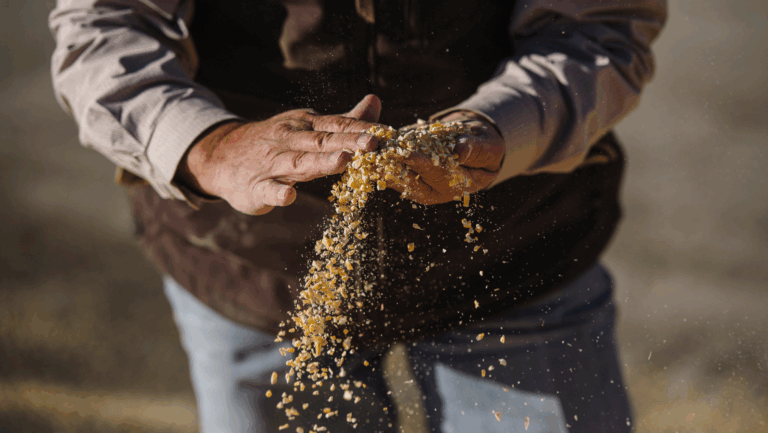How to Attract Pollinators to Your Farm
June is National Pollinators Month—the perfect time to discuss the many benefits wild pollinator populations have on farming.
No one understands the importance of pollinators more than farmers who rely on them to grow a healthy crop. In the U.S., the production of pollinator-dependent crops is valued at over $50 billion per year. More than 75 percent of crop types and 35 percent of the food we eat relies on pollinators—including cocoa, coffee, soybeans, palm oil, avocados, and more.
But it’s not just pollinator-dependent crops that benefit. One 2020 study found that increasing pollination produces higher-yield crops with more concentrated sugar than other methods, like increasing water or fertilizer use.
Some farmers even found they used less water after installing native pollinator habitats. They no longer needed as much water to produce the same value crops. In addition, native bees prefer native plants for shelter, which are typically more drought resistant and require less water.
Six Tips to Attract Pollinators
One of the best benefits of relying on native pollinators is that they already exist in your ecosystem and are already trained to pollinate crops. For many farmers, the only measure they need to take to increase their populations is to provide them with food and shelter. Here are the most common steps farmers take to attract pollinators to their farms:
1. Minimize Tillage
It’s a misconception that all bees live in hives hung safely in the branches of tall trees. In reality, 70 percent of the world’s bee species lay eggs in underground nests. Minimizing tillage prevents their homes and eggs from being destroyed.
2. Allow Crops to Bolt
If your leafy crops don’t need to be tilled right away, you can attract pollinators by allowing some to flower.
3. Plant Pollinator-Friendly Habitats
Planting native plants with overlapping flowering periods around your farm will give bees access to food year-round and will provide shelter from strong winds. The best habitats include:
- Riparian Buffers
- Fallow Fields
- Hedgerows and Windbreaks
- Cover Crops
4. Leave Undeveloped Areas
Sometimes, doing nothing at all even benefits native pollinators. Leaving dead trees on your property can encourage bees to build a nest there. If you create a pond or a ditch and have extra soil piled up, ground-nesting bees may build a nest inside of it.
5. Use Bee-Friendly Pest Management Practices
Bees are welcome on any farm that relies on pollinators, but other insects pose a threat to crops, necessitating the use of pesticides.
Farmers who want to attract pollinators to their farm use products that have low toxicity to bees and follow label instructions as written. The pesticides that have the greatest effect on native pollinators are those that are highly toxic or that contaminate pollen, nectar, or soil.
Many farmers consult nearby beekeepers on the best times of year or day to spray their crops with pesticides. But in general, it’s best to avoid:
- Spraying in windy conditions
- Spraying very fine mists or small droplet sizes
- Applying pesticides when plants are in bloom
- Applying pesticides during warm evenings when pollinators are active
6. Apply for Conservation Grants and Certifications
The Natural Resources Conservation Service (NCRS) lists more than thirty conservation practices that benefit pollinators, many of which provide financial assistance to help implement these measures.
- Environmental Quality Incentives Program (EQIP) – A program that focuses on soil health and wildlife habitats.
- Conservation Stewardship Program (CSP) – A program that focuses on improving grazing conditions, increasing crop resiliency, or developing wildlife habitat.
- Agricultural Conservation Easement Program (ACEP) – A program that helps farmers protect, restore, and enhance wetlands or protect working farms and ranches.
- Conservation Reserve Program (CRP) – A program that encourages farmers to convert erodible cropland into vegetative cover, which pollinators use as shelter and food.
Building Stronger Agriculture: Custom Loans to Empower Farmers’ Success
Our team has the utmost respect for our nation’s hardworking farmers. We view farming as not just a job, but a noble, rewarding, and profound way of life. We want to help farmers succeed in any way we can. As the nation’s largest agricultural REIT, we create custom loans for farmers that give them access to the funds they need to succeed.
If you want to attract pollinators to your farm and need extra funding to do so, our ten-year farm line of credit may be the right solution. With no mandatory paydowns or annual paperwork, you’ll be able to start work right away.






